#england tour of pakistan
Text
When did Ben Stokes turn from cricketer to cameraman? Mark Wood supported, seeing the VIDEO you will also say wow!
When did Ben Stokes turn from cricketer to cameraman? Mark Wood supported, seeing the VIDEO you will also say wow!
highlights
The England team is performing brilliantly under the captaincy of Ben Stokes.
England won the 3-match Test series 3-0 on Pakistan tour
new Delhi. England Test team captain Ben Stokes appeared in the role of cameraman on the ground after cleaning the host team in the 3-match Test series against Pakistan. During this, Stokes was not alone, but he was supported by fellow player Mark…
View On WordPress
#all rounder ben stokes#Ben#Ben Stokes#cameraman#cricketer#eng vs pak#england cricket team#england tour of pakistan#Mark#Mark Wood#mike artherton#nasser hussain#pacer mark wood#Stokes#supported#turn#video#Wood#wow..
1 note
·
View note
Text
England Won Second Test Against Pakistan.
England Won Second Test Against Pakistan.

View On WordPress
#Cricket News#England has Defeated Pakistan in 2nd Test Match#England tour of Pakistan#England vs Pakistan#england vs pakistan 2nd test match#England Vs Pakistan 2nd Test Match Results#England Won 2nd Test
0 notes
Link
#pakistan vs england 2022#PAKvsENG Today match predidction#Cricket Match#t20i#Cricket match prediction#england tour of pakistan
0 notes
Link
0 notes
Text
#asian news#uk news#Pakistan tour of England#England tour of Pakistan#Pakistan cricket#England cricket#cricket news
0 notes
Text
Twitter reactions: England edge past Pakistan to win the second Test in Multan
Twitter reactions: England edge past Pakistan to win the second Test in Multan
Mark Wood grabbed four Pakistan wickets to hand England a series-clinching 26-run victory in the second Test at the Multan Cricket Stadium and take an unassailable 2-0 lead in the three-match series.
The fast bowler finished with 4-65 as Pakistan were bundled out for 328 in the post-lunch session on Day 4, having been given a challenging target of 355.
Wood, who missed the first Test in…

View On WordPress
0 notes
Text
పాక్ గడ్డపై ఇంగ్లాండ్ టీమ్కి 300 మందితో సెక్యూరిటీ.. హెలికాప్టర్తో పర్యవేక్షణ
పాక్ గడ్డపై ఇంగ్లాండ్ టీమ్కి 300 మందితో సెక్యూరిటీ.. హెలికాప్టర్తో పర్యవేక్షణ
పాకిస్థాన్ గడ్డపై 17 ఏళ్ల తర్వాత ఇంగ్లాండ్ క్రికెట్ టీమ్ మళ్లీ పర్యటిస్తోంది. ఆఖరిగా 2005లో అక్కడ మ్యాచ్లు ఆడిన ఇంగ్లాండ్ టీమ్ సుదీర్ఘ విరామం తర్వాత కరాచీలో అడుగుపెట్టింది. దాంతో ఆ జట్టుకి వీవీఐపీ సెక్యూరిటీని పాకిస్థాన్ క్రికెట్ బోర్డు అందిస్తోంది. 2009లో శ్రీలంక జట్టు ప్రయాణిస్తున్న బస్పై లాహోర్లో దండగులు కాల్పులు జరపగా… అప్పటి నుంచి పాక్లో పర్యటించేందుకు ఇంగ్లాండ్ నిరాకరిస్తూ వచ్చింది.…

View On WordPress
#In 2009#Monitoring by helicopter#Six bullet-proof mini buses have been arranged for the England team to travel#Sri Lanka and other teams did not venture to tour there.#Sri Lankan team&039;s bus was attacked by assailants in Lahore#T20 matches between Pakistan and England from 20th of this month at the National Stadium in Karachi#till last year South Africa#Till this year Australia#West Indies
0 notes
Text
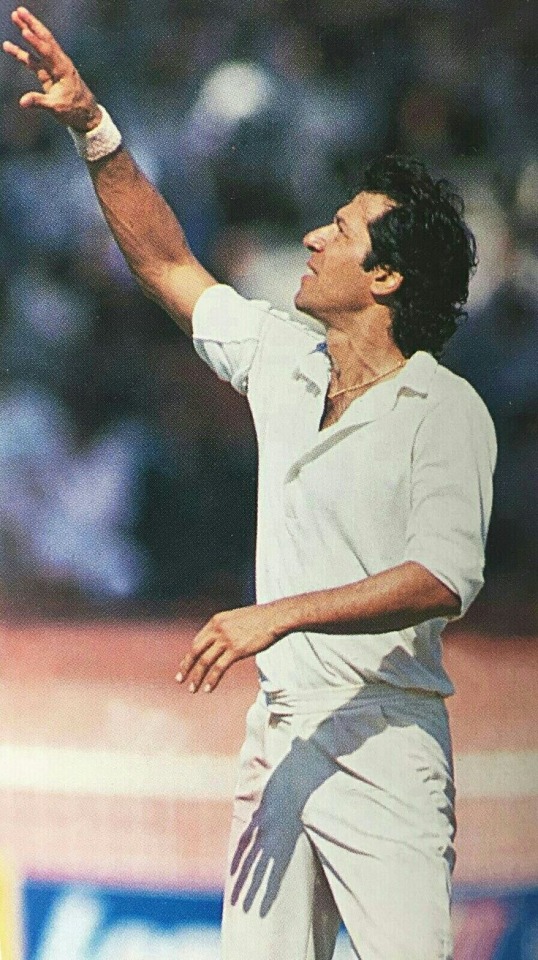

THE WRATH OF KHAN
Imran Khan is indisputably Pakistan’s greatest cricketer. As an all-rounder, he bears comparison with the best there have ever been, a skillful fast bowler and resourceful batsman with a solid defense. But all of them he was a great leader that he really stood out. If you see the history of Pakistan cricket, it shows that Pakistan is a notoriously difficult team to captain.
But he had the massive charisma and stature to unify them and drive them to play above themselves, and that is quite a talent. His finest hour was undoubtedly guiding Pakistan to their first World Cup triumph in 1992, top-scoring with 72 in the final against England at MCG in front of 87k spectators. Although, Imran’s famously imploring his team earlier in the tournament when their hopes hung by a thread to fight ‘like cornered tigers’.
But he has to his name several other outstanding achievements. Imran Khan-led Pakistan to their first Test series wins in both India 1986-87 – obviously a huge thing in his country – and England in 1987. He also led Pakistan to three drawn series in a row against West Indies when West Indies were at the height of their powers. Pakistan, in fact, were the first side to seriously challenge West Indian supremacy.
When they won Test Match at Guyana in 1988, then it was the first time in ten years that West Indies had lost a home Test. The major contribution of Imran Khan when he took 11 wickets in the game. In his career, Imran claimed 80 wickets at 21.18 apiece against West Indies, an incredible record given how strong they were at the time.
He scored some important runs against them too, notably in his final series against West Indies in 1990– 91 when he averaged 50.33 (his overall average against West Indies was 27.67). Imran, who led Pakistan on and off for ten years from 1982 to 1992, mentored some fine players during that period, notably fast bowlers Wasim Akram, Waqar Younis, and Aaqib Javed.
Especially two w’s who swung the ball at pace even greater distances than he did. Imran had the bearing of a leader and for the most part, the players followed. Captaincy elevated his game to a striking degree, averaging 50.55 with the bat and 19.90 with the ball. He turned himself into a considerable bowler with an astonishing record inside Pakistan where visiting fast bowlers tended to find life desperately hard.
Imran himself took 163 wickets at 19.20 apiece there, a better record than he had elsewhere (his overall record was a hugely impressive 362 wickets in 88 Tests at 22.81 each; no one had taken more for Pakistan at the time he retired). Some of the famous players never faced him in Pakistan as he was nursing a stress fracture that prevented him from bowling for the best part of two years when toured therein 1983–84.
England encountered him in 1982 and 1987 and he was a major force both times. In three Tests in 1982, when we were perhaps a little fortunate to win the series 2–1, he scored 212 runs and took 21 wickets. However, he came to England with a passion to beat England in England in 1987. And he led the Pakistan side to do the first time.
In that series, he again took 21 wickets and was the match-winner with the ball in the one game that had a positive outcome at Headingly Leeds. Imran Khan bowling immaculately to take seven for 40 in the second innings. Imran, who was at Oxford in the early 1970s and from there joined Worcestershire, started out as a brisk medium-pacer but through determination and intelligence turned himself into a genuine fast bowler of quality. His two cousins Majid Khan and Javed Burki also led the Pakistan cricket team in the 1960s and 1970s.


Many cricketers remember facing him in one of their earliest games for Leicestershire at around the time he was stepping up his pace. It was the day after David Gower took an early exit from university and we were playing a Benson & Hedges Cup quarter-final at Worcester on a good old New Road pitch with pace and bounce. Gower was caught at slip off him and the ball carried a long way behind me, always a good measure of someone’s speed.
At the age of 18, he made a test debut against England at Edgbaston in 1971 but did not take a permanent place due to below-par performance. Hence, he continued to focus on his education and cricket in England and come back to the side in 1974 on the tour of England.
In county cricket in the period from the mid-1970s to mid-1980s, Imran would have been up there with Mike Procter and Malcolm Marshall as among the best at swinging the ball at pace. Perhaps the thing that completed his education was joining World Series, from which he emerged a far better bowler, learning from watching and working with so many other fine fast bowlers recruited by Kerry Packer. Imran Khan’s charismatic personality and athletic talent made him a popular celebrity all over the world.
In 1976, Imran took 6 for 63 and 6 for 102, for a match figure of 12 wickets to lead his country to 8 wickets win in the 3rdTest at Sydney. This spell surprises the whole Australian team and Pakistani dressing room. Before that match, he was having 9 test matches experience with 25 wickets under his belt with a heavy average of 43.52. Pakistan was trailing 0-1 in the tough series, but Imran’s hostile bowling spell makes Pakistan a marked ascent in the world of cricket.
In 1980, Imran Khan scored 123 runs in the first Test century against the powerful bowling attack of West Indies at Lahore. The years in which he played from 1980 to 1986, on either side of his lay-off for the stress fracture, he was taking his Test wickets at a very cheap cost. In 1982 he returned what remains the best match figures for Pakistan in Tests of 14 for 114 against Sri Lanka in Lahore. The following winter he took an incredible 40 wickets at 13.95 in six Tests against India.
What the Pakistan bowlers, led by Imran and Sarfraz Nawaz, seemed to understand better than everyone else was the mysterious art of swinging the old ball. Therefore, for a batsman, coping with anyone who could move the ball – whether old or new – both ways were always a challenge. You worked hard to get your runs.
The early 1980s was a great era for all-rounders with Imran Khan, Ian Botham, Richard Hadlee, and Kapil Dev all doing great things and rivaling each other for the status of top dog. In the 1987 Cricket World Cup, Khan decided to quit international cricket. But later, the Pakistan public and Zia-ul-Haq the Prime Minister requested him to take back his retirement. He could not reject the public appeal and return to international cricket until 1992.
In terms of bowling, Imran was perhaps consistently the quickest of them. Botham had times where he bowled with the same sort of pace, Hadlee could bowl a sharp delivery if needed but in comparison was slightly down on pace overall, and Kapil was brisker medium than brisk. But they all moved the ball in the air or hit the seam or both, and that was really what made them so difficult to face.
In July 1987, Imran became the first Pakistani bowler to take 300 wickets milestone during the 3rd Test vs England at Lords. If you see the stats, then Imran and Hadlee stood well out in front, averaging around 22 while Botham and Kapil took their wickets at a cost in the high 20s, a reflection really that they were unable to maintain their early brilliance into older age.
Ian Botham probably ranked first as a batsman but Imran, who began his career down the order, developed into a seriously good top-order player and accordingly ended up with six Test hundreds to his name (Botham made 14, Kapil eight, and Hadlee two). Imran kept on improving and became a world-class batsman in all forms.
Indeed, towards the end of his career, he was playing more as a batsman who bowled than a bowler who batted, and when he scored those runs in the 1992 World Cup final, he was batting at number 3. His Test record with the bat was highly respectable, an average of 37.69 comparing well to Botham’s 33.54, Kapil’s 31.05, and Hadlee’s 27.16.
Imran retired from all forms of cricket after winning the 1992 world cup. What gives Imran preeminence in this all-rounder fest is his stature as a leader of a national side that had previously lacked any direction. Since Imran, Pakistan cricket has rarely been stable. Talented players continue to be produced in extraordinary numbers given the absence of a coherent domestic structure.
But it has been engulfed in more than one corruption scandal, while a terrorist attack on a touring Sri Lanka team in 2009 has forced them since to set up a new home in the Middle East. Imran himself has entered politics in the ambitious hope of addressing his country’s many problems. After retirement, he entered politics and outspoken critic of government corruption in Pakistan.
Imran Khan laid the foundation of Pakistan Tehreek-e-Insaf in 1996. Imran Khan started a new journey into Pakistan politics and continued their efforts after badly failing in the 2002, and 2007 elections. Eventually, his efforts bring some happiness to his party becoming a strong candidate for the 2013 elections.
Even in one accident he badly injured his neck and back to falling from a platform at an election campaign rally. Therefore, his braveness in fighting against corruption & poverty won a plurality of seats in the July 2018 elections. Then he became the 22nd prime minister of Pakistan. The first cricketer to be knighted a prime minister of any country.
Imran Khan remains a philanthropist in the public eye. He has a great passion to build a cancer hospital after his mother died of those diseases in 1985. His wish was fulfilled by completing Shaukat Khanum Hospital in Lahore in 1994 named after Khan’s mother.
6 notes
·
View notes
Text
Pakistan, Ireland go toe-to-toe in inaugural T20I series today
Ireland captain Paul Stirling (left) with Pakistan skipper Babar Azam. — PCB
Remaining two matches to take place on Sunday, Tuesday.
Pakistan to play against England after Ireland T20I series.
Pakistan and Ireland met only once in T20I World Cup 2009.
DUBLIN: The Pakistan men’s cricket team is set to kick off its Europe tour with the first of three T20Is against Ireland scheduled to take…
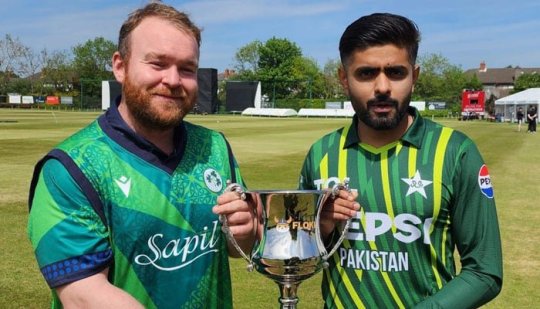
View On WordPress
0 notes
Text
Pakistan T20 World Cup squad announcement delayed; Hasan Ali, Harris Rauf named for tour of Ireland and England | Cricket
Pakistan has delayed announcing its 15-man squad T20 World Cup. PCB has named an 18-member squad for the three-match T20I series against Ireland. The same players will then travel to England for four T20Is. The 15-member World Cup squad will be announced after the first T20 against England on May 22, the selectors said on Thursday. The International Cricket Council has set a deadline of May 24…
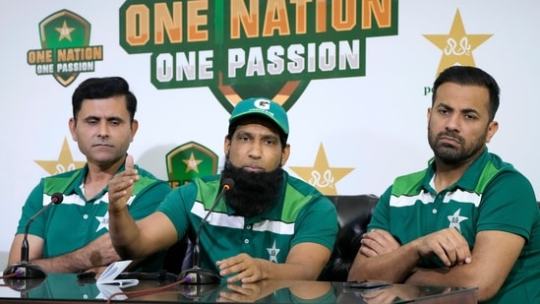
View On WordPress
0 notes
Text
Entering Pakistan, the English player washed the bowlers of Babar Azam, scored more than 700 runs alone
Entering Pakistan, the English player washed the bowlers of Babar Azam, scored more than 700 runs alone
new Delhi. The bang game of England cricket team continues on the tour of Pakistan. After capturing the series by winning two consecutive three-match Tests, he is now eyeing a clean sweep. In the first Test, not one or two but 4 English batsmen had scored centuries. This tour has become memorable for an England player. Till now he has scored 700 runs and he still has a chance to improve it…
View On WordPress
#Azam#Babar#Babar Azam#ben stokes cricket news#bowlers#cricket news hindi#england tour of pakistan#english#Entering#Harry Brook#Harry Brook Hundred#harry brook records#Harry Brook world record#Pakistan#Pakistan vs England#player#runs#scored#washed
0 notes
Link
Pakistan Women’s team excited about England tour, Heather Knight File photo Heather Knight, th...
0 notes
Text
How to save cricket as an international sport
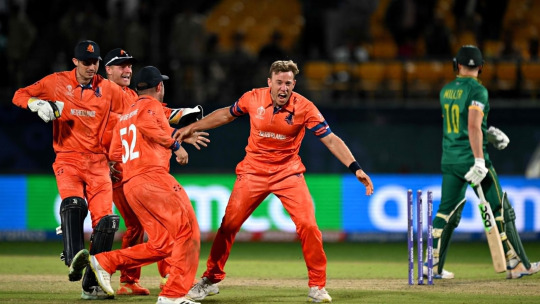
I've kept an eye on international-level cricket for some years now, and I understand it as such that there's been concerns about… pretty much everything, really. Ranging from Test matches not being profitable, team suspensions, multiple wars, associate members feeling they'll never get anywhere, etc.
My Dandelion Sprout Report will be short, but concise and solid:
Make Netherlands a full member, and give them access (if they don't already have) to players from non-Sint Maarten Dutch Caribbean.
Split the West Indies into 2 full members, a "North West Indies" and a "South West Indies". To remain competitive, the north can absorb Bermuda, while the south can absorb Turks And Caicos and Suriname. At this point there'll be 14 full members.
The only factor left that prevents Netherlands from full status, is a lack of competent arenas, as they literally play their international matches on a lawn in a park. Amsterdam Olympic Stadium would very narrowly fit an international-sized cricket field, provided artifical grass is placed on most of the running track.
Europe only has one cricket field with seating for more than 30,000, while India and Australia can easily fill 110,000 on a good day. Sure the situation is not any better in South Africa or the Caribbean, but it's getting a little awkward in England in particular. Generally the sport needs larger stadiums almost everywhere.
Establish limits in Test Matches for how long an innings can last, and limits for wasting time to aim for draws. Let's say that if time runs out on day 5 while the batting team's innings have lasted more than 6 hours, that batting team has lost.
If the first 2 days rain out, or days 2 and 3 rain out while the first team's first inning has not ended, the match will become "1 innings per team" instead of 2 innings.
If days 1-4 rain out, the match will revert to an ODI with full Test credentials.
If a team has a single batting inning that last 3 days (72 hours) in real time without rained-out days and without being all out, that team automatically wins.
Don't force teams to play a Test world tour if they don't want to. Just make the Test World Championship a straight knockout tournament over the course of a year or less.
India and Pakistan refusing to play each other outside the World Cup and Asia Cup, has got a bit weird. If they can play there, oftentimes if the cups are in each others' countries, then they should stop being so hostile to each other that they can't play Test matches at each other either.
0 notes
Text
Brook to return home from tour of India
For the past 12-18 months, if not longer, Yorkshirebatsman Harry Brook has been one of the key players in the England side. Having initially joined the side for the tour of Pakistan, the Sunrisers Hyderabad and Lahore Qalandar star has taken to test cricket like a duck has to water.
With less than a week of England’s cricketers due to facing off against Rohit Sharma’s India, the ECB have…
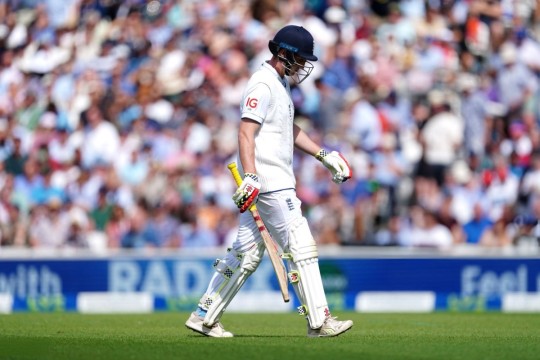
View On WordPress
#baidu#Bingo#england#england cricket#Google#Sports#The Sports Buff#World Test Championships#yahoo#Yandex
0 notes
Link
[ad_1] England are set to tour India for a five-match Test series, scheduled to begin on January 25. The visitors have also decided to travel with a famous Manchester United chef Omar Meziane, so that the English players receive nutritious food. England's Ben Stokes and Joe Root during practice (REUTERS) Meziane has travelled with the England team in the past, when they toured Pakistan in December 2022. In a report, The Telegraph said, "England will take their own chef on tour to India later this month to try and avoid players falling ill during the seven-week trip. The chef will join the squad in Hyderabad before the first Test on January 25 in an attempt to keep on top of the players’ nutrition." Wrap up the year gone by & gear up for 2024 with HT! Click here The decision hasn't been well-received by fans and former players on social media, with many criticising the move. Taking to X, formerly known as Twitter, ex-India player Virender Sehwag wrote, “Yeh zaroorat Cook ke jaane ke baad padhi. IPL mein nahi padegi.” Meanwhile, a cricket fan wrote, “Maybe England can send in their reserve players too instead of the real strength ones to save them from getting embarassed since the result of white wash is not going to change much no matter whom they send to play and whom they send to cook here in india.” Meanwhile, another fan said, “The only cook England really need in India is Sir Alastair.” "Doesn't matter, we have good Chefs like @ashwinravi99 and @imjadeja to cook England in India", wrote a fan. Here are the other reactions: The Test series between India and England will begin in Hyderabad, followed by matches in Visakhapatnam, Rajkot, Ranchi and Dharamshala. The visitors last won a Test series in India in 2012, and in their most recent tour in 2021, they lost 1-3. ABOUT THE AUTHOR At HT Sports Desk, passionate reporters work round the clock to provide detailed updates from the world of sports. Expect nuanced match reports, previews,reviews, technical analysis based on statistics, the latest social media trends, expert opinions on cricket, football, tennis, badminton, hockey,motorsports, wrestling, boxing, shooting, athletics and much more. ...view detail [ad_2] Source link
0 notes
Text
How Cricket become an internationally popular sport
Cricket is one of the oldest sports and the second most popular game in the world after soccer.
Cricket is particulary popular in india, Australia, England, its birthplace, Bangladesh, South Africa, Pakistan, Sri Lanka, and New Zealand.
There is also growing popularity in the West Indies, Netherlands, United Arab Emirates, Zimbabwe, and many other parts of the world.
But how did cricket become such an internationally popular sport? That is what we will explore in this article.
The Early Days Of Cricket
Cricket is believed to have first started, possibly as early as the Saxon times, on woodland fields in the Weald area, southeast of England. However, it wasn't until 1611 that there was a record of adults engaging in the sport.
A decade later, in 1709, the first village cricket teams were formed and were given county names. The game slowly gained popularity in England, and in 1744, the first laws of the game were drawn up.
The laws were later amended in 1774 by "Star and Garter Club" following the LBW and the introduction of the maximum bat width and the third stump.
The Star and Garter Club and club members are the founders of the famous Marylebone Cricket Club, who are the current custodians of the cricket laws.
The MCC was formed in 1787 and has since made numerous revisions to the cricket codes.
Throughout the 18th century, cricket became very popular in England. The village teams graduated to county teams playing organized matches against each other. These matches attracted significantly larger crowds.
The Spread Of Cricket To The Rest Of The World
Cricket was introduced to the rest of the world as early as the 17th century by English colonists, sailors, traders, soldiers, settlers, and missionaries. North America was the first to be introduced to the game in the late 17th century.
In the 18th century, cricket spread to the West Indies, India, New Zealand, and Australia also because of the colonization that was taking place at the time. The Caribbean and South Africa, and other parts of the world were introduced to the game in the 19th century.
The first record of cricket being played in the USA was in 1709, but the first international match was in September 1844 between Canada and the US. By mid of the civil war, cricket had been played in nearly 22 states.
It is also believed that international tours by cricket professionals also popularised the game in different parts of the world.
There were several tours, notably, the English tour to Canada and the US in 1859, the tour to Australia in 1861-1862, and the famous Australia tour to England in 1877 for the first-ever Test match between the two, which resulted in the oldest cricket rivalry of all times.
Similar tours led by Lord Hawke and his team of amateurs headed to South Africa, India, New Zealand, Australia, and West India between 1892 to 1903 also played a huge role in making cricket popular.
The Birth Of Women's Cricket
The first reference of women's cricket was in 1745, a match between Bramley and Hambledon villages in Surrey, and in 1811, the first county match was played between the maids of Hampshire and Surrey.
Because of how popular women's cricket grew, it necessitated the need for a governing body, and in 1887, the Women's Cricket Club was formed in Yorkshire. A few decades later, the Women's Cricket Association was then formed in 1926.
Shortly thereafter, in 1934, the first international Test match for women was set. The match was between England and Australia in which England emerged as the winner. Since then, there have been countless women's test matches.
Surprising to many, women's cricket was quickly adopted around the world. By 1958, the International Women's Cricket Council was formed to promote international tours and provide a liaison between countries on matters pertaining to the game.
The founding nations were, of course, England and Australia, Holland, New Zealand, and South Africa. More members joined over the years, and more associations set base in West Indies (1973), India (1973), Ireland (1982), Pakistan and Sri Lanka (1979), and Denmark (1983).
The Women's World Cup was thereafter introduced in 1973 in England following a conversation between millionaire businessman Jack Hayward and the then England captain Rachael Heyhoe-Flint.
Hayward agreed to fund the match, which was played at the Lords. England won the historic ODI match by eight wickets against Australia.
Due to a lack of resources and money, women's cricket had to be merged with men's cricket in the 1990s, and in 2005, the International Women's Cricket Council (IWCC) agreed to officially surrender control of the women's games to the ICC.
This meant more funds and resources could flow into women's cricket. And with better facilities and more money, more financial opportunities opened up. It wasn't long before the results of the merger were seen.
In 2014, professional contracts for women cricket players were awarded for the first time.
Why Is Cricket Not At The Olympic Games?
Even though cricket is the second most played in the world, it has only made one appearance at the Olympic games. That was in 1900 when England scored against France.
Several things can be attributed to its absence, but the major contention has always been the suitable format. Is it the ODI, T10, or T20? Discussions are, however, underway on the format to be adopted for the Olympics.
There are hopes that the game will feature in the 2028 Olympics set to be held in Los Angeles. The ICC has so far set up a committee to see to it. Crickets at the Olympics will be a major boost to the game's popularity.
What Makes Cricket Popular?
It's no secret that cricket is one of the world's most popular games. It has an insanely passionate fan base that keeps growing by the day. It is watched and played by basically everyone - rich or poor, young and older. It's no wonder it has a very diverse fanbase.
The sport has a healthy presence globally but a stronger dominance in England, India, Australia, South Africa, Bangladesh, West Indies, and Pakistan. In India, for instance, the game is watched by 93% of sports viewers. Matches in India often attract hundreds of millions of viewers.
You wouldn't believe how adored cricket players are. Players like Steve Smith, Sunil Gavaskar, Ben Stokes, AB de Villers, Rahul Dravid, and others have caught the attention of an immensely wide audience. These cricketers are treated as demigods and are an inspiration to many young players.
One of the main reasons why cricket is popular is that it's such an engaging game both to watch and play.
Cricket betting sites have also provided another boost to the game's popularity, especially in India, where cricket is beyond popular. It's almost fanaticism. In addition, it has enabled cricket fans to earn huge amounts of money just by supporting their favorite teams.
The Future of Cricket
First off, it looks like cricket may be featured in the 2028 Olympic games set to be held in Los Angeles. If not, there will be another chance for cricket again in 2032.
Women's cricket is also much more likely to flourish. The first-ever Women's IPL set for 2023 will establish the future for women's cricket as the best cricketers worldwide will gather to compete.
It also looks like there will be two IPLs in the future. According to Ravi Shastri, the former Indian coach, two IPLs every year might be inevitable.
As the T10 continues to grow, there is fear that the popularity of ODI’s is decreasing and may even vanish in the next decade. Players like Moeeb Ali, Usman Khawaja, and others have spoken of the impending threat that may face the ODIs.
Conclusion
First played in the late 16th century in southeast England, cricket has steadily risen over the centuries to become the world's second most popular game after soccer.
It hasn't been all rosy, but the love of the game has made it possible. So many advancements to the game's formats and codes have been made, in an effort to keep cricket updated according to our present time.
The future of cricket around the world is bright, but uncertain. Cricket is the most popular sport in many fast-growing countries such as India, Pakistan and Bangladesh.
Will cricket make it to the Olympics and reach a wider audience than ever before? It remains to be seen, but no matter what happens, there is no doubt that cricket has a bright future ahead.
1 note
·
View note